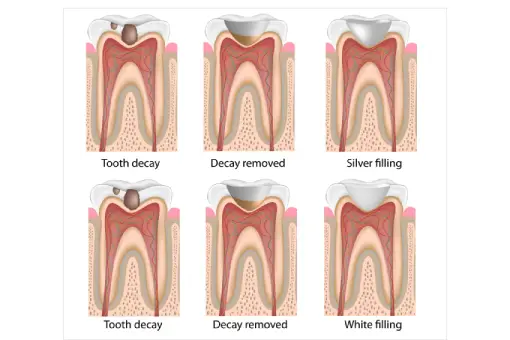We are in pace with all sophisticated technologies and the best doctors with an outstanding track record.

A dental filling is a restorative procedure done to reconstruct the tooth structure lost due to dental caries or fractures. Dental fillings are advised only when caries or damage is confined to enamel or dentin. When a tooth is infected with dental caries, the infected tissue is removed by preparing a cavity and restored with a suitable dental filling material. Dental fillings are also used to repair fractured teeth. Dental fillings are recommended to restore tooth structures that are lost due to physiological or pathological wear.
If the dental filling is not done for a decayed tooth at the correct time, the infection progresses from enamel to dentin. If caries are confined to dentin, pulpal inflammation is reversible. Further delay in treatment causes microbes and their products to reach the pulp and results in irreversible pulpitis. At this stage, the tooth would require expensive and extensive root canal treatment.
Usually, 8 hours following dental filling, the patient can chew on the side of restoration.
Composite dental fillings may sometimes allow repair without replacement.
No. Dentin sensitivity following dental fillings subside after a few days. If not, consultation with a dentist is required.
The longevity of dental restoration depends on the type of filling, habits of the patient, and clinician’s skills. Usually, amalgam restorations last for 10-15 years, whereas composite restorations last for five years.
TESTIMONIALS
Lorem Ipsum is simply dummy text of the printing and typesetting industry. Lorem Ipsum has been the industry’s standard dummy text ever since the 1500s,
Know More
Ritu Amuktha
I have been there thrice. They amaze me with their expertise in getting back my broken teeth that helped me regain my confidence, and the warm welcome I received every time made Ravi’s dental care my all-time favorite destination for any dental problem.

Janvi Gorthi
I am extremely happy with their implant treatment as it looks very natural and super comfortable at a reasonable price.